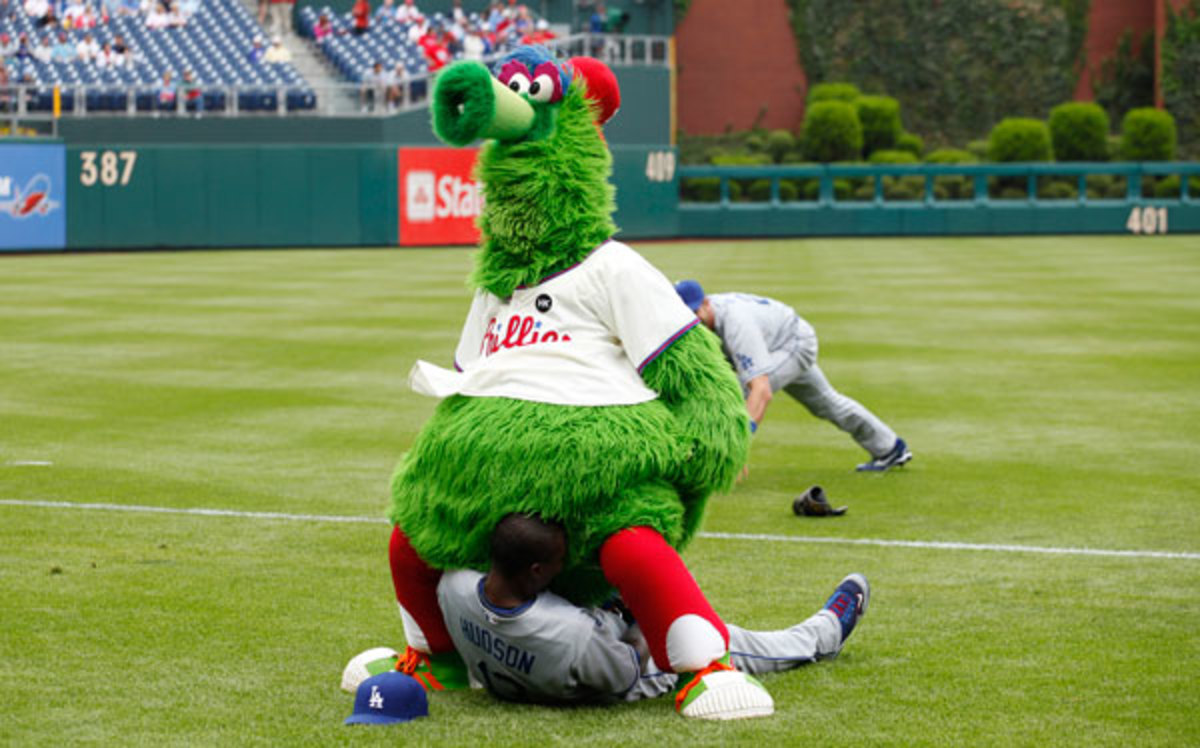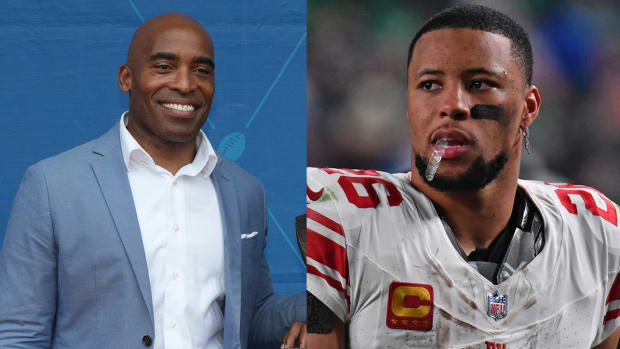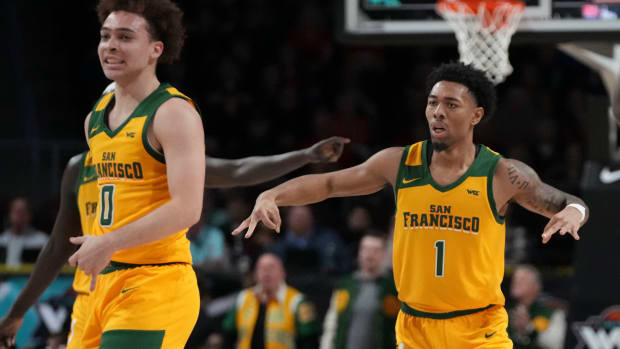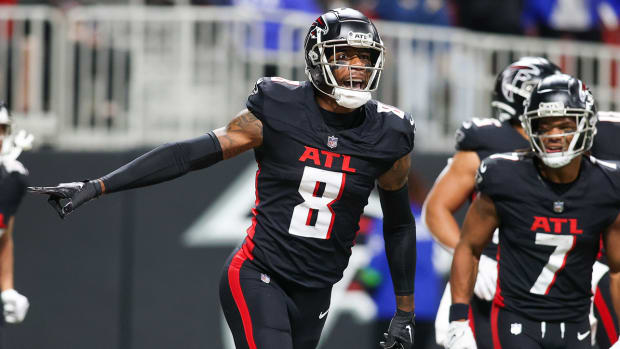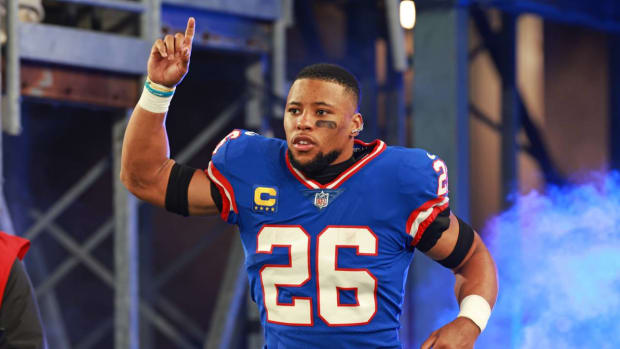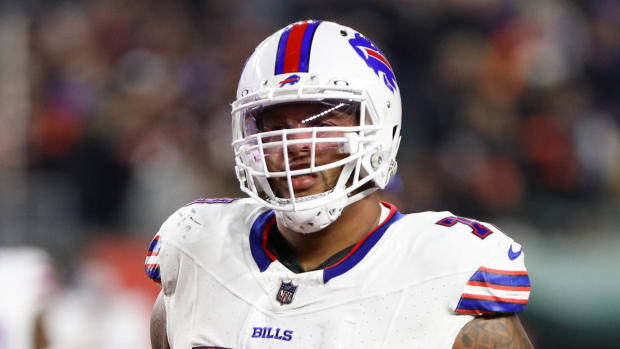Ripped Tongues, Ejected Birds and Assassin Penguins: 13 Surprising Mascot Facts
Joe Robbins/Getty Images
The Phillie Phanatic turns 35 today. First introduced in 1977 as a way to attract more families to Veterans Stadium, the furry green talisman of the Philadelphia Phillies was designed for a cost of $5,200 and has since become the most iconic—and most litigated against—mascot in sports. Anyone this hated by Tommy Lasorda must be doing something right.
In celebration of the Phanatic finally being age-eligible to run for president, here are 13 things you never knew about sports mascots.
1. The NHL's first mascot was the Flames' Harvey the Hound, who debuted in 1983.
The Calgary mascot rose to international fame when Edmonton coach Craig MacTavish ripped his tongue out during a 2003 game.
[youtube="http://www.youtube.com/watch?v=8JeF271w2WE"]
2. The Minnesota Vikings' mascot, Ragnar, is the only official "human" mascot (not an animal or caricature costume) in the four major North American sports.
His namesake is real-life Norse hero Ragnar Lodbrok.
Hannah Foslien/Getty Images
3. Only four NFL teams don't have mascots: the Giants, Jets, Raiders and Packers.
The Rams had also been holdouts until they became the 28th NFL team to introduce a mascot with the 2010 addition of Rampage.
David Welker/Getty Images
4. Blades, the mascot of the Boston Bruins, was named during the '90s by a young fan named Jillian Dempsey ...
... who went on to become an All-Ivy, All-ECAC forward herself at Harvard.
Dave Sandford/NHLI via Getty Images
5. BJ Birdy, the mascot of the Blue Jays from 1979 to 1999, was ejected from a 1993 game for showing up the umpire.
The costumed bird was thrown out for attempting to incite the Skydome crowd into thinking that umpire Jim McKean had made the wrong decision on a caught line drive.
John Iacono/SI
6. Iceburgh, the Pittsburgh Penguins' mascot, played an instrumental role in the 1995 thriller Sudden Death with Jean-Claude Van Damme.
One of the terrorists used the mascot's costume as a disguise.
[youtube="http://www.youtube.com/watch?v=NNWZM_F-dds"]
7. The only mascot in the history of pro leagues to change sports is Youppi!
He joined the Montreal Canadiens from the Expos after the baseball team left town for Washington.
Ladislas Kadyszewski/NHLI via Getty Images
8. Benny, the since-retired mascot of the original Winnipeg Jets, was named after the Elton John song.
It's also a tribute to the team's first owner, Ben Hatskin.
[youtube="http://www.youtube.com/watch?v=8vLlpJc9mW0"]
9. The only mascot in the four major sports that is not costumed is Al the Octopus, the cephalopodic mascot of the Detroit Red Wings.
The eight-legged beast was named after Joe Louis Arena building operations manager Al Sobotka -- no relation to Frank, Nick or Ziggy.
Dave Reginek/NHLI via Getty Images
10. T.D., the mascot of the Miami Dolphins, was invited to Hong Kong to participate in the 2005 Chinese New Year’s Day Parade.
Random.
Al Pereira/WireImage
11. The Mascot Grand National is an annual race over hurdles between mascots of English soccer teams which has taken place annually since 1999 in Cambridgeshire.
Yet it's fallen into disrepute in recent years because teams seemed to be hiring ringers instead of using the day-in-day-out performers.
Mike Finn-Kelcey/Getty Images
12. Bailey, the mascot of the Kings, wears No. 72 not as a tribute to one-time right winger Shane Churla (who also wore the number) but because that's the average temperature in L.A.
He also appeared on The Price Is Right.
Mike Finn-Kelcey/Getty Images
13. The university of Texas football players ate their mascot at a sports banquet in 1920.
The longhorn steer was fattened up and served at a football banquet because the school didn't have enough money to care for him and he wasn't tamed to roam the campus.
Mike Finn-Kelcey/Getty Images
